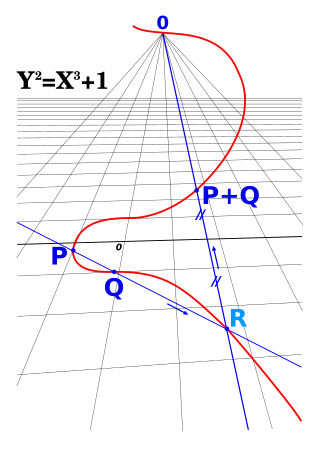In mathematics, the term "graded" has a number of meanings, mostly related:
In abstract algebra, it refers to a family of concepts:
- An algebraic structure is said to be -graded for an index set if it has a gradation or grading, i.e. a decomposition into a direct sum of structures; the elements of are said to be "homogeneous of degreei ".
- The index set is most commonly or , and may be required to have extra structure depending on the type of .
- Grading by (i.e. ) is also important; see e.g. signed set (the -graded sets).
- The trivial (- or -) gradation has for and a suitable trivial structure .
- An algebraic structure is said to be doubly graded if the index set is a direct product of sets; the pairs may be called "bidegrees" (e.g. see Spectral sequence).
- A -graded vector space or graded linear space is thus a vector space with a decomposition into a direct sum of spaces.
- A graded linear map is a map between graded vector spaces respecting their gradations.
- A graded ring is a ring that is a direct sum of additive abelian groups such that , with taken from some monoid, usually or , or semigroup (for a ring without identity).
- The associated graded ring of a commutative ring with respect to a proper ideal is .
- A graded module is left module over a graded ring that is a direct sum of modules satisfying .
- The associated graded module of an -module with respect to a proper ideal is .
- A differential graded module, differential graded -module or DG-module is a graded module with a differential making a chain complex, i.e. .
- A graded algebra is an algebra over a ring that is graded as a ring; if is graded we also require .
- The graded Leibniz rule [ disambiguation needed ] for a map on a graded algebra specifies that .
- A differential graded algebra, DG-algebra or DGAlgebra is a graded algebra that is a differential graded module whose differential obeys the graded Leibniz rule.
- A homogeneous derivation on a graded algebra A is a homogeneous linear map of grade d = |D| on A such that acting on homogeneous elements of A.
- A graded derivation is a sum of homogeneous derivations with the same .
- A DGA is an augmented DG-algebra, or differential graded augmented algebra , (see Differential graded algebra).
- A superalgebra is a -graded algebra.
- A graded-commutative superalgebra satisfies the "supercommutative" law for homogeneous x,y, where represents the "parity" of , i.e. 0 or 1 depending on the component in which it lies.
- CDGA may refer to the category of augmented differential graded commutative algebras.
- A graded Lie algebra is a Lie algebra that is graded as a vector space by a gradation compatible with its Lie bracket.
- A graded Lie superalgebra is a graded Lie algebra with the requirement for anticommutativity of its Lie bracket relaxed.
- A supergraded Lie superalgebra is a graded Lie superalgebra with an additional super -gradation.
- A differential graded Lie algebra is a graded vector space over a field of characteristic zero together with a bilinear map and a differential satisfying for any homogeneous elements x, y in L, the "graded Jacobi identity" and the graded Leibniz rule.
- The Graded Brauer group is a synonym for the Brauer–Wall group classifying finite-dimensional graded central division algebras over the field F.
- An -graded category for a category is a category together with a functor .
- A differential graded category or DG category is a category whose morphism sets form differential graded -modules.
- Graded manifold – extension of the manifold concept based on ideas coming from supersymmetry and supercommutative algebra, including sections on
In other areas of mathematics:
- Functionally graded elements are used in finite element analysis.
- A graded poset is a poset with a rank function compatible with the ordering (i.e. ) such that covers .













































